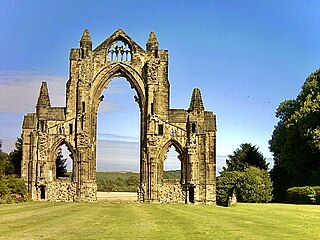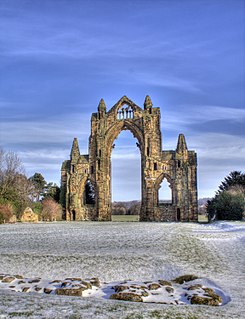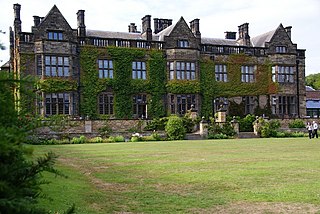
Viscount Long, of Wraxall in the County of Wiltshire, is a title in the Peerage of the United Kingdom. It was created in 1921 for the Conservative politician Walter Long, who had previously served as Member of Parliament, President of the Board of Agriculture, President of the Local Government Board, Secretary of State for the Colonies and First Lord of the Admiralty. His grandson, the second Viscount was killed in action in the Second World War. He was succeeded by his uncle, the third Viscount. He had earlier represented Westbury in Parliament as a Conservative. The title was next held by his son, the fourth Viscount. He served as a government whip from 1979 to 1997 in the Conservative administrations of Margaret Thatcher and John Major. However, Lord Long lost his seat in the House of Lords after the passing of the House of Lords Act 1999. As of 2017 the title is held by the latter's son, the fifth Viscount, who succeeded in that year.
Walter of Guisborough was a canon regular of the Augustinian Gisborough Priory, Yorkshire and English chronicler of the fourteenth century.
Longe is an English and French aristocratic household, descending from the House of Bourbon-Préaux, a cadet branch of the House of Bourbon. The surname is of Anglo-Norman origin.

Gisborough Moor is a moor in England's North York Moors, lying to the south of the town of Guisborough. The summit is a broad flat ridge, with the highest point at the southern end, some 1-mile (1.5 km) south of a trig point. It is crossed by a number of footpaths leading between the Cleveland Way and Commondale and other settlements to the south. Highcliff Nab, near the moor's north-western corner, overlooks Guisborough from the edge of the scarp.
Thomas Chaloner was an English naturalist. He was the son of John Chaloner, Irish secretary of state during the reign of Queen Elizabeth I,. Thomas was therefore first cousin to Sir Thomas Chaloner who became Governor of the Courtly College, with whom he is often confused or conflated.

Richard Godolphin Walmesley Chaloner, 1st Baron Gisborough was a British soldier and politician. He was a Conservative Member of Parliament (MP) from 1895 to 1900 and 1910 to 1917, and a member of the House of Lords from 1917 until his death.
Thomas Weston Peel Long Chaloner, 2nd Baron Gisborough was an English landowner, soldier and Peer.
Thomas Richard John Long Chaloner, 3rd Baron Gisborough is a British Peer.
Richard Chaloner is the name of:
The Liverpool Abercromby by-election, 1917 was a parliamentary by-election held on 28 June 1917 for the British House of Commons constituency of Liverpool Abercromby. The seat had become vacant when the Conservative Member of Parliament (MP) Richard Chaloner had taken the post of Steward of the Chiltern Hundreds on 18 June 1917, thus effectively resigning from the Commons. Five days later, Chaloner was created Baron Gisborough. He had been MP from Liverpool Abercromby since the January 1910 general election. The Conservative candidate, Lord Stanley held the seat for the party. He remained the constituency's MP until the seat was abolished for the 1918 general election.
Robert Pursglove was an English sixteenth-century bishop.
Longe is a surname of Anglo-Norman origin. By the mid-13th century there were Long(e) families in several English counties. In Wiltshire they became Viscounts Long, Long baronets, Tylney-Long baronets, Gisborough Barons and the Earls of Mornington. A Norfolk line settled at Spixworth Park in 1693. In Suffolk, Longs became the Barons Farnborough, while there was also a line in Ireland.
Robert Chaloner, FRS was an English Member of Parliament and Lord Mayor of York.






